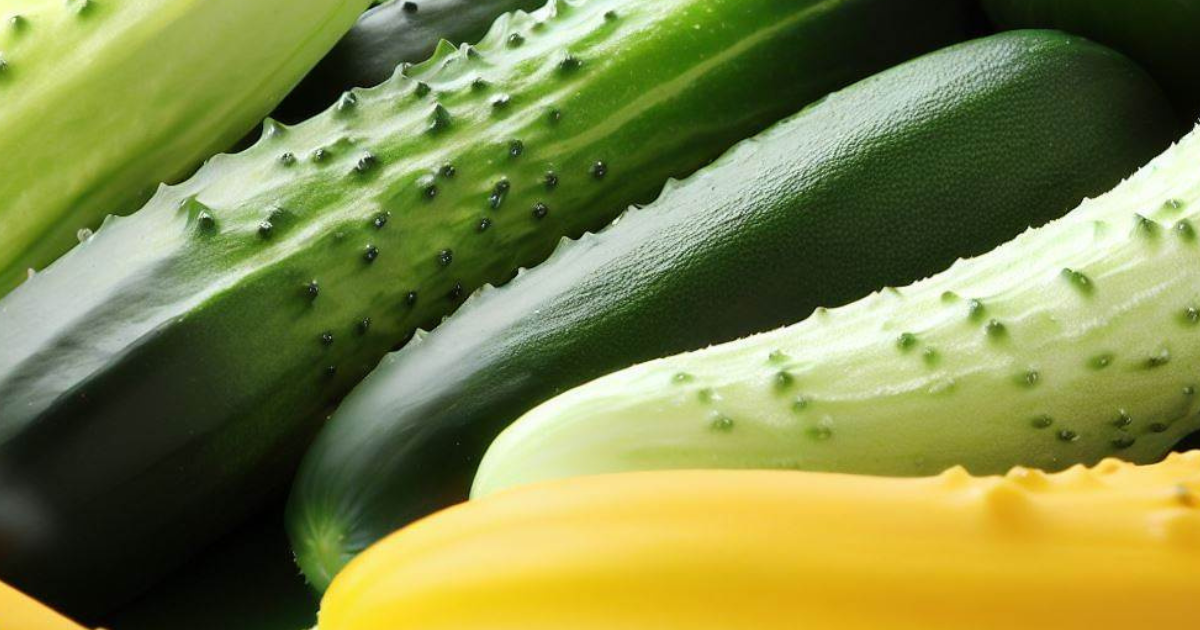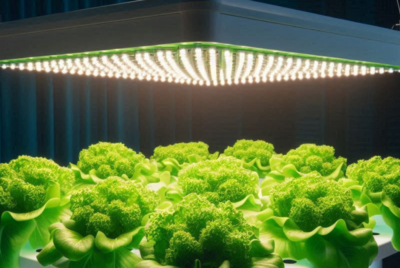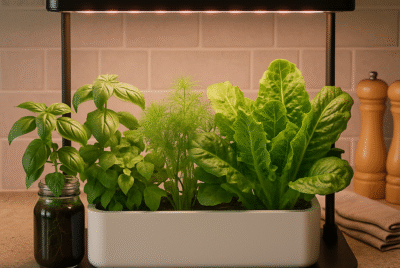Hydroponic Cucumbers: The succulent way
Growing hydroponic cucumbers offers numerous benefits, from maximizing space utilization to avoiding soil-borne diseases. In this article, I will guide you through the process of successfully cultivating cucumbers using the right hydroponic kit. Whether you’re a beginner or an experienced gardener, hydroponic cucumbers can be a rewarding addition to your indoor garden. So let’s dive in and discover the secrets to growing healthy and abundant hydroponic cucumbers.
Selecting the Right Cucumber Varieties

When choosing cucumber varieties for hydroponic cultivation, there are a few key factors to consider. First and foremost, select varieties that are known to thrive in soilless environments. Look for varieties specifically bred for greenhouse or hydroponic production. Consider factors such as cucumber size, taste, disease resistance, and growth habit. Popular choices for hydroponic cucumbers include English cucumbers, mini cucumbers, and burpless cucumbers.
Setting Up a Hydroponic System for Cucumbers
Before you can start growing hydroponic cucumbers, you need to set up a suitable hydroponic system. There are several types of hydroponic systems that work well for cucumbers, such as nutrient film technique (NFT), deep water culture (DWC), and ebb and flow systems. Choose a system that suits your space, budget, and level of expertise.
To set up the hydroponic system, you’ll need the following components:
1. Grow trays or channels: These will hold the plants and nutrient solution.
2. Reservoir: A container to hold the nutrient solution.
3. Pump and tubing: To circulate the nutrient solution through the system.
4. Air pump and air stones: To provide oxygen to the roots.
5. pH and EC meters: To monitor and adjust the pH and nutrient levels.
Once you have the components, follow the manufacturer’s instructions to assemble the system. Ensure that it is properly leveled and stable. Fill the reservoir with the appropriate nutrient solution, and test the pH and EC levels to ensure they are within the optimal range for cucumber growth.
Providing Optimal Growing Conditions
Cucumbers thrive in specific environmental conditions, so it’s important to create the ideal growing environment in your hydroponic setup. Here are some key factors to consider:
1. Temperature: Cucumbers prefer temperatures between 70°F and 80°F (21°C to 27°C) during the day and slightly cooler temperatures at night.
2. Humidity: Maintain a humidity level of around 60% to 70% to prevent the development of fungal diseases.
3. Lighting: Cucumbers require ample light for photosynthesis. Use high-quality LED grow lights or a combination of natural sunlight and artificial lighting to provide the necessary light intensity.
4. Nutrient Solutions: Prepare a nutrient solution specifically formulated for cucumbers. Monitor and adjust the nutrient levels regularly to ensure the plants receive the necessary macro and micronutrients.
Planting and Transplanting
To start hydroponic cucumbers from seeds, sow the seeds in small starter cubes or rockwool plugs. Keep them in a warm and humid environment until the seeds germinate. Once the seedlings have developed true leaves, it’s time to transplant them into the hydroponic system.
Create holes or slots in the grow trays or channels to accommodate the seedlings. Gently place the seedlings in the holes and cover the roots with the growing medium. Ensure that the roots are well submerged in the nutrient solution, but avoid burying the stem too deep.
For vertical growth, use trellises or strings to support the cucumber vines as they grow. This will prevent the vines from sprawling and promote better air circulation and light penetration.
Nutrient Management and Fertilization
Proper nutrient management is crucial for the healthy growth of hydroponic cucumbers. Monitor the pH and nutrient levels of the solution regularly using pH and EC meters. Adjust the pH using pH up or down solutions to maintain a range of 5.8 to 6.2 for cucumber plants.
Cucumbers require a balanced nutrient solution containing essential macronutrients like nitrogen (N), phosphorus (P), and potassium (K), as well as important micronutrients. Follow the manufacturer’s instructions to prepare the appropriate nutrient solution for cucumbers. Also consider to to use the right hyroponics fertilizers.
Keep in mind that cucumber plants have different nutrient requirements at different stages of growth. Adjust the nutrient levels accordingly to ensure optimal plant health and productivity.
Watering and Irrigation
Proper watering is essential for hydroponic cucumbers. Overwatering can lead to root rot, while underwatering can cause stress and stunted growth. Implement an automated irrigation system, such as drip irrigation or a timed flood and drain system, to ensure consistent and efficient watering of your hydroponic cucumbers.
Monitor the moisture levels in the growing medium regularly and adjust the irrigation schedule as needed. Avoid letting the growing medium dry out completely, but also ensure it doesn’t become waterlogged. Maintain a balance to promote healthy root growth and nutrient uptake.
Additionally, pay attention to the quality of the water you use in your hydroponic system. Tap water may contain high levels of chlorine or other chemicals that can harm the plants. If necessary, use a water filter or let the water sit for a day to allow the chlorine to dissipate before using it in your system.
Pruning and Training Cucumber Plants
Pruning and training cucumber plants are important for maximizing productivity and maintaining plant health. Here are some key practices to consider:
1. Remove side shoots: As cucumber plants grow, they produce side shoots or suckers. These can divert energy from fruit production. Pinch off the side shoots regularly to maintain a single main stem.
2. Support the plants: Cucumbers are vining plants that benefit from support structures. Use trellises, stakes, or strings to provide vertical support for the vines. This promotes better air circulation, reduces the risk of diseases, and makes harvesting easier.
3. Remove yellow or diseased leaves: Regularly inspect your cucumber plants and remove any yellow or diseased leaves. This helps prevent the spread of diseases and maintains the overall health of the plants.
By implementing these pruning and training techniques, you can encourage healthier growth and improve the yield of your hydroponic cucumber plants.
Pest and Disease Management
While hydroponic systems can help reduce the risk of soil-borne pests and diseases, it’s still important to remain vigilant. Here are some tips for pest and disease management:
1. Monitor regularly: Inspect your plants regularly for any signs of pests or diseases. Look for pests like aphids, spider mites, or whiteflies, as well as common cucumber diseases such as powdery mildew or cucumber mosaic virus.
2. Implement preventive measures: Maintain proper sanitation in your hydroponic system and keep the growing area clean. Remove any plant debris or fallen leaves promptly to prevent the buildup of pests and diseases.
3. Use organic pest control methods: Consider using organic pest control methods like insecticidal soaps, neem oil, or beneficial insects to manage pests in a safe and environmentally friendly manner.
4. Practice crop rotation: If you have multiple hydroponic systems or are growing cucumbers in rotation with other crops, practice crop rotation to minimize the risk of recurring diseases.
Harvesting and Storage
Harvesting hydroponic cucumbers is a rewarding experience. Here are some guidelines for harvesting and post-harvest handling:
Harvest cucumbers when they reach the desired size and color. Different varieties have different maturity indicators, so refer to the seed packet or variety information for guidance.
Use a clean pair of scissors or pruners to cut the cucumbers from the vine. Avoid pulling or twisting, as this can damage the plant.
Handle the harvested cucumbers with care to avoid bruising or damage. Store them in a cool place or in the refrigerator to maintain their freshness and crispness.
Consume the cucumbers as soon as possible for the best flavor and texture. Hydroponic cucumbers can have a longer shelf life compared to soil-grown cucumbers, but they are still best enjoyed when fresh.
Closing remarks
Growing hydroponic cucumbers can be a rewarding and fruitful endeavor. By following the guidelines outlined in this article, you can set up a successful hydroponic system, provide optimal growing conditions, and harvest healthy cucumbers. Enjoy the experience of cultivating your own fresh and delicious cucumbers right in your home.
Whether you’re a beginner or an experienced hydroponic gardener, the process of growing cucumbers hydroponically is a satisfying journey. From selecting the right cucumber varieties to setting up the hydroponic system, providing optimal growing conditions, and managing nutrient levels, each step contributes to the success of your cucumber garden.
Remember to regularly monitor your plants for any signs of pests or diseases and take appropriate preventive measures. Prune and train your cucumber plants to promote healthy growth and maximize productivity. When it’s time for harvest, handle the cucumbers with care and store them properly for the best flavor and quality.
Now that you have the knowledge and guidance to grow hydroponic cucumbers, it’s time to embark on this exciting adventure. Enjoy the abundance of fresh cucumbers and the satisfaction of growing your own food. Happy hydroponic cucumber gardening!
FAQs
1. Can I grow hydroponic cucumbers without prior experience?
Absolutely! Hydroponic cucumber cultivation is suitable for both beginners and experienced gardeners. With the right guidance and attention to detail, you can successfully grow hydroponic cucumbers.
2. How often should I check and adjust the nutrient levels in my hydroponic system?
Regular monitoring of the nutrient levels is essential for optimal plant growth. Generally, it’s recommended to check and adjust the nutrient levels every 1-2 weeks or as needed based on the growth stage of your cucumber plants.
3. Do hydroponic cucumbers require pollination?
Yes, cucumbers require pollination for fruit development. In a hydroponic system, you can manually pollinate the flowers using a small brush or by gently shaking the plants to transfer the pollen between the male and female flowers.
4. Can I reuse the nutrient solution for multiple crops?
It’s not recommended to reuse the nutrient solution for multiple crops. Each crop has specific nutrient requirements, and reusing the solution may lead to nutrient imbalances or the buildup of pathogens. It’s best to prepare fresh nutrient solutions for each crop cycle.
5. How long does it take for hydroponic cucumbers to reach maturity?
The time it takes for hydroponic cucumbers to reach maturity can vary depending on the cucumber variety and environmental conditions. On average, it takes about 50-70 days from planting to harvest. Refer to the seed packet or variety information for specific maturity timelines.
Remember, hydroponic cucumber gardening is a continuous learning process. Observe your plants, adapt to their needs, and enjoy the rewarding experience of growing your own fresh cucumbers in a soilless environment.
*We may earn a commission from purchases made through our links, at no cost to you. This does not affect our product recommendations. Please see our disclosure to learn more.





